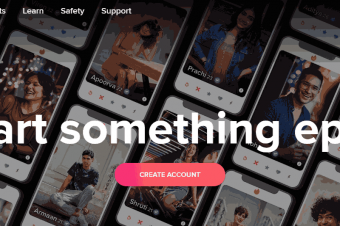Grant Writing Master Class
Tags: Grant Writing
Learn Grant Writing for Nonprofit Organizations
Last updated 2022-01-10 | 4
- Prepare Organizations for Grant Writing- Find Grant Applications
- Write Nonprofit Grant Applications
What you'll learn
* Requirements
* A basic knowledge of nonprofit organizationsDescription
Grant writing can seem overwhelming. Really overwhelming.
How do you know where to start?
How do you know which grants are good for your organization?
Grant writing does not have to be confusing or overwhelming. It doesn't have to be something that only the professionals do.
You can learn how to find and write successful grant applications for nonprofit organizations.
How?
Through this course.
In this course you will learn how to be successful in the grant writing sphere.
You'll learn:
- How to get organizations ready for grants
- Where to find grants
- What kind of grant options there are for your organization
- Which grant applications are worth applying for
- How to write a winning grant
- How to revise your grant applications
This course is everything you need to jump into the grant writing sphere.
Let's get started.
Who this course is for:
- anyone interested in learning how to find and apply for grants
Course content
9 sections • 40 lectures
Why Study and Learn Grant Writing Preview 01:00
Be sure to download the workbook attached to this lecture! It will guide you through the course and give you places to take notes and complete assignments.
Reasons to Learn Grant Writing Preview 02:33
Understanding Nonprofit Financial Streams: Where Do Grants Fit In? Preview 03:11
Grant Writing Myths Preview 02:51
Possible Grant Writing Timeline Preview 01:09
Action Item: Create Your Own Grant Writing Timeline
The Need Statement Preview 07:44
Checklist for Completing a Needs Assessment
Action Item: Complete a Needs Assessment
Using Lecture 5, complete your own needs assessment. Once you have assessed the need, write a practice Need Statement using the six criteria from the lecture. Below is the text from the lecture, to streamline the process.
I. Assessing the Need: In order to give the funder a full picture of the problem or need you are addressing, you must know about the need yourself. To do this we will research the problem or situation. There are many ways to conduct a needs assessment: look for research that others have done about the situation: you can search a local university for academic research, use google scholar, seek out government departments, find others who have researched the issue including community members and journalists, and use your direct experience with the issue.
Once you find this information, you will use it to explain to the funder how large the Need is and why it is an issue that should be addressed.
For example, if we were an organization addressing the needs of refugees in the community, I might start writing my grant by saying that in the world there are approximately 65.3 MILLION refugees. In our community alone there are X refugees. Then I could paint a picture for the funder of one specific refugee that we serve. I would then continue to explain that we help X amount of refugees just like the individual we described and show the funder that we need their help to serve these refugees.
II. Clarifying Who is Affected: Secondly, we need to clarify who is affected. When you are assessing the need, it is important to clarify who is affected. There are layers of people or things that are affected by any issue. “It will strengthen your proposal to first list the groups that are affected separately and then show how they are interrelated.”
For example, let’s think through who is affected in the refugee example:
There are the displaced families, the kids who can’t go to school, the communities they were from, the communities where they are currently located, and the economies around the world.
Once you come up with a list of everyone who is affected by the problem, narrow your list down to those you think you can affect by your solution. Then describe the need you see primarily in terms of these groups. (But don’t forget to mention how it affects the larger picture as well.) In the case of the refugees, you might narrow your list to the refugees who are reachable in your community.
III. Seeking Out the ROOT Cause of the Need: After we find who is affected and who we can help, we will move onto #3: seeking out the root cause of the need. If we can get to the root cause of the need or issue, we can know how to address the need, and we can show the funder how they can help us address the need.
Let’s jump to a new example. Now we are an organization working with kids who are struggling at school because they don’t eat lunch each day. If we are looking for the root of the problem, we might initially say, “Children at X school are not receiving enough nutrition, which is causing them to struggle in school.” But there are many other factors, or roots to this problem, depending on your organization’s perspective. Let’s think through some of the reasons why these children might not be doing well at school because of poor eating habits:
Perhaps
Their parents are out of work
Their parents don’t have the means to provide for the necessities of life
There aren’t enough jobs in the community for the parents
The children are spending their lunch money elsewhere (on clothes, drugs, etc.)
The lunch prices have been raised
People don’t see the importance of having their children eat lunch each day at school
The school isn’t providing enough options for the kids, so they would rather go hungry than eat what is offered
Lunch time is too early and the kids aren’t hungry yet
You can see that the root of the problem that you define, is going to drastically affect your response. You are going to approach the problem of the kids’ parents being out of work differently than the kids who are spending their lunch money on drugs.
IV. Measuring the Scope of the Problem: The fourth aspect of the Need that we are going to discuss is “measuring the scope of the problem.” As you look at the root of the problem, you will also need to address the scope of the problem. Think back to the list we made of people affected by the issue. We then took this list and narrowed it down to those we thought we could affect. This step is a continuation of that idea. We begin by offering data about the big picture and then narrow it down to who or what the funders can actually affect by funding our grant. While you want to show how important the issue is on a grand scale, you also want the funder to see that they can actually make a difference. People aren’t prone to fund something if they are just going to be a drop in the bucket. They want to know that they can really help with the money they are giving.
V. Exploring Who Else is Doing Similar Work: In addition to recognizing and explaining the scope of the problem, you will also need to address who else is doing similar work with the need. Explain how everyone working on this problem fits into the larger picture. Think of it this way: This problem is so large that multiple organizations and groups are working on it. This is what we are doing and this is what we believe we can affect.
VI. Explaining Long-Term Implications: You’ll also want to point out how this need will be affected if you don’t address the situation right now, as well as the long-term effects of what will happen as a result of addressing the issue. This can show the funder the importance of addressing the need or problem right away rather than wait. This is something that is especially important for art organizations, museums, and similar groups because you need to paint a picture for the funder of what life would be like without the new art museum or dance program.
Overall, the Need shapes EVERYTHING in your proposal. It shapes what you are going to do, how you are going to do it, who you are going to approach for support, what kind of grant you are looking for, the scale of the issue, and how you will measure success. Needless to say, it is VITAL that you understand and explain the need, and you really need to do this even before you start the grant writing process.
Designing Your Project Preview 03:23
Action Item: Draft Your Project
Using either the Logic Model for Project Planning, or the Project Design Worksheet, design your project.
Note: Not every grant application is seeking funding for a program or project. If this is going to be the case for you (for instance, you are seeking funding for overhead costs, advertising, expansion, etc.) then just use this for a later grant application.
Types of Funders Preview 02:22
Types of Grants Preview 03:21
Common Elements of Government and Foundation Grants Preview 03:05
Comparison of Government, Foundation, and Corporation Grants Preview 00:34
Common Elements of Grants Preview 02:41
Know Your Organization Preview 02:02
Grant Ready? Preview 01:12
Action Item: Gathering Information
Using the information from this section, gather all of the necessary information that you will need for grant writing.
Finding Funders Preview 01:53
Action Item: Finding Potential Funders
Now that you know how to find potential funders, take some time to find up to 20 potential funders. Feel free to use the resources from the lecture above as well as personal connections.
Picking the Right Funder(s) Preview 02:16
Action Item: Picking a Funder
Now narrow down your list of 20 potential funders to those who fit your organization. If you don't have any potential funders who would fit your organization then take some time to find a few more funders.
Preparing to Write Preview 01:11
Writing the Grant Preview 00:13
Writing the Need Statement Preview 03:42
Action Item: Drafting the Need Statement
Before you start answering all of the specific questions on the grant application, draft your need statement using all of the information in the previous lecture as well as from Section 2. Remember, most grants will not have a specific section labeled "Need Statement," so your purpose in drafting your own need statement is to know what information is important to include when you are trying to convince the funder to fund your organization.
Writing the Project Description Preview 00:32
Action Item: Writing the Project Description
Take a look back at either your Logic Model or Project Planning worksheet from Section 3. Taking the information from that, write your project description.
Designing an Evaluation Plan Preview 02:34
Action Item: Designing an Evaluation Plan
Using the steps discussed in the lecture, design your own evaluation plan.
Developing a Project Budget Preview 00:57
Action Item: Project Budget
Using the worksheet attached to the previous lecture, develop your project budget.
Supplemental Documents Preview 00:22
Action Item: Supplemental Documents
Take a look at your grant application. Write a list of the supplemental documents they are asking for and begin gathering those documents.
The Revision Process Preview 02:28
Tips for Effective Writing Preview 02:31
Action Item: Revision
Using everything you have learned from this section, go back and revise your grant application using the revision priorities and ways to enhance your application.








 This course includes:
This course includes:















